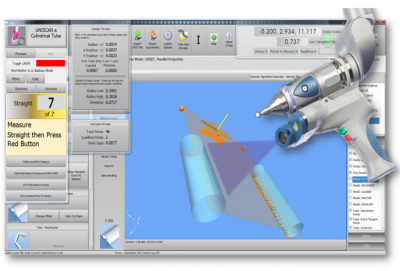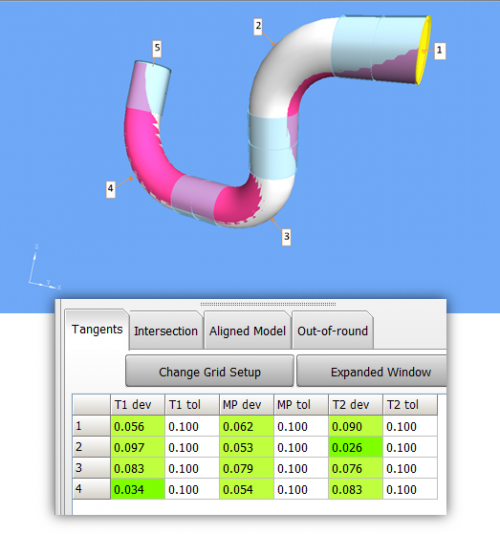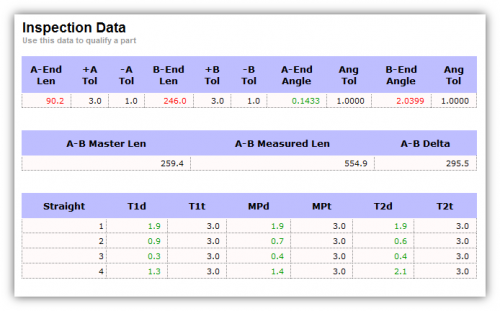321 Plane Line Point Aligment
|
|
Contents[hide] |
What is Alignment?
|
"Alignment" refers to the process where the measured tube is being aligned to the master tube. |
321 Plane Line Point
|
The alignment is pronounced "three two one plane line point".
|
Illustration of how 321 PLP WorksThe 321 Plane Line Point alignment method is much less sophisticated than the other iterative Best Fit aligment algorithms.
|
Visually Demonstrate the Problem of Qualifying with Angles
|
Unless you can perform 3D trigonometry mentally on-the-fly, the answer to the question above isn't obvious. Even if we guess the answer, we can not accurately guess at what tolerance envelope value the part would be considered acceptable. |
|
This second alignment image shows the part with IDENTICAL ANGLES - but the two middle straights are lengthened to 10 inches between bends. |
The Best Data for Qualification
|
The best data for qualification is centerline TANGENT POINT and MIDPOINT data in the Inspection Data menu and in the Reports menu. |






